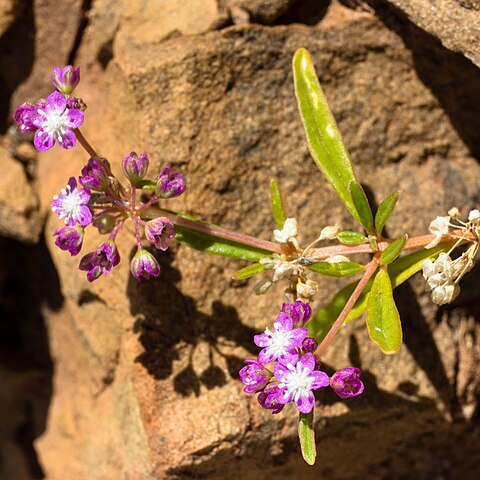Sprawling annual or perennial, stems 50-500 mm long, glabrous or with short rough hairs, often tinged red. Leaves in tufts, linear to obovate, 10-50 mm long, green above, whitish beneath. Flowers in umbel-like cymes at nodes and branch tips, opening in succession, small, usually reddish. Fruit of 5 warty achenes.
Leaf-lamina 5–81 × 1–23 mm., entire, ranging from linear to linear-oblong, oblong, elliptic, lanceolate, oblanceolate, spathulate, obovate or cuneate, the apex retuse, obtuse, rounded or subacute, often apiculate, the margins flat or slightly revolute; petiole 0–5 mm. long.
Prostrate to procumbent spreading glabrous herbs, annual or perennial with annual shoots, with several semi-succulent stems often tinged with red up to c. 50 cm. long.
Perianth-segments 5, 2–4 mm. long in fruit, herbaceous, obtuse or subacute, with red or white membranous margins.
Inflorescences sessile or pedunculate, often numerous, umbelliform to dichasial, often many-flowered.
Flowers hermaphrodite or unisexual, pinkish, scentless; pedicels up to c. 16 mm. long.
Stamens (8)10–15(20) with filaments slightly broadened below.
Carpels 5 in hermaphrodite flowers, 10–15 in female flowers.
Fruit blackish, densely covered with warts.

